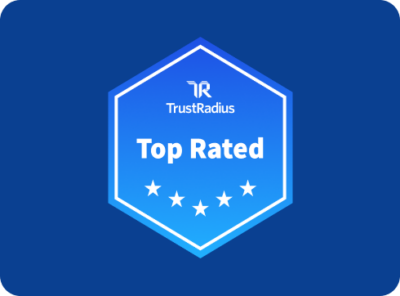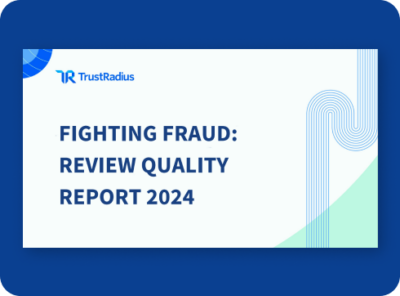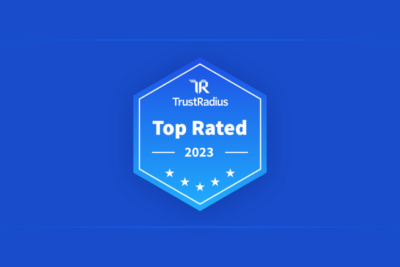
Drift + TrustRadius Webinar: Why customers are critical in building buyer trust
In our webinar Why Your Buyers Don’t Trust You & How To Fix It, Drift’s VP of Marketing Dave Gerhardt sat down with CEO Vinay Bhagat to discuss how the buyer’s journey has changed and why you need to leverage customers to build your brand, engage prospects, and close more deals.
“One of the hardest things today is that we’re all doing marketing and sales, but no one wants to be marketed or sold to,” said Gerhardt. “I don’t fall for marketing and I don’t fall for sales as a consumer. But then I go to my job in marketing, and we have to do marketing and sales. Something is broken there.”
This challenge is compounded by the fact that buyers are building their own journey, rather than following the traditional paths B2B companies create for them. “There is no linear funnel —- the funnel is going away,” he added. “Information is free now. I don’t have to get information about your company by talking to someone there.”
A primary reason buyers are turning to other channels is because they don’t get what they need from vendors.
“Unfortunately most buyers today don’t get plain English truth when they go to a B2B website,” said Bhagat. “Buying a piece of technology is like entering a marriage in some ways, you have to go into it with your eyes wide open and not just have a romanticized view of what it is going to be like. There is the reality of the hard work that has to happen, there are limitations and shortfalls in addition to pluses. Buyers just want to enter the relationship with their eyes wide open.”
Gerhardt agreed. “It used to be the key to great product marketing was case studies. But people are becoming immune to that because they just don’t believe it any more — they know any company can manufacture quotes and case studies and articles. The deck is stacked against you, because even if that stuff is true, buyers are so skeptical they just don’t believe it.”
The solution? Empower your customers to speak for you, and ensure your prospects hear what they have to say. Managing your reputation on social media and review sites is part of that equation, but to fully engage today’s buyer, it can’t stop there.
“Realize you have an opportunity to give buyers what they want in your own channels,” said Bhagat. “If you are doing outbound in the form of marketing or sales outreach, or if you have a high-traffic website where people are coming to you for research as part of their journey, you have the opportunity to infuse it with the customer’s voice in a more genuine way — give the buyer what they want.”
For the full story, watch the webinar recording below, and continue reading for an actionable recap of the live Q+A.
How do you respond when brands are hesitant to get their customers on the record?
“Not everyone is there yet today,” responded Bhagat. “But it’s here — this is how people buy today. You need to get with the program and adapt to how modern buyers buy.”
“There is no other answer than you have to,” agreed Gerhardt. “Businesses want to adapt, be in with the new, but then pick and choose the pieces they want. But this is the world we live in today, this is how you compete as a business.”
Bhagat said that fear of negative reviews is usually the root cause, but one that brands need to overcome. “Ease your way into it. You can start by doing a narrow-cast approach, inviting known advocates to review you, and then cast a wider net. But ultimately you do need to cast that wider net. First, you don’t know who all of your advocates are. Second, it isn’t going to look authentic and balanced if everything is too gloriously positive. Third, you’re not going to learn. The point of reviews isn’t just to manage your social reputation and get great soundbites for sales and marketing. It’s to actually become a more customer-driven organization.”
“As Vinay said, this is doing business in 2018 and beyond,” added Gerhardt. “You don’t control the message as a company anymore. You have to provide a great customer experience and hope that a great customer experience leads to people saying positive things about you. The bigger risk to me is not enabling your business to live in that type of world, where people then say nothing at all.”
What is the best way to get started with reviews?
“Don’t boil the ocean,” said Bhagat. “There are a lot of ‘review’ sites out there. Narrow your field of view and think about what you’re trying to accomplish. Are you just trying to manage your social reputation as a shield? Then pick two or three sites that are high traffic, and get a minimum viable mass of reviews there.”
“There is a maturity curve beyond using reviews as a shield and actually using them as a sword,” he continued. “If you arm your sales team with them, if you use them proactively in demand generation, you can distinguish yourself. You can brand yourself differently to the competition, removing frictions and barriers in sales. I’d pick one venue to you want to go do that on. Find someone who is going to be helpful in making you successful, not just in creating high-impact content but also in putting it to work.”
Gerhardt said this was something he actually struggled with himself at Drift, trying to decide if they should just go deep on one site or building out a review presence on all of them.
“I’d do a couple that are relevant to your persona and audience, because people are doing research on a few sites,” Bhagat responded. “But you need to think beyond the shield side of managing your reputation and being there for the active buyer who is already searching for you. You have a new cutting-edge concept and you are taking it to market in a very novel way. You are trying to change the conversation, you are not just trying to capture traffic around online chat and chat bots. You are going out in a very clever and compelling way, to teach them about the possibility and the opportunity. In that outreach, you have got to back up your claims with social proof at scale.”
How do you measure the ROI of reviews?
“It’s multi-faceted,” Bhagat replied. Often, it is easiest to start with one aspect of the program when determining overall value.
“If we start with demand generation as one pillar, the way we look at reviews is there will certainly be some inbound activity from being present on a site,” he said. “Maybe you show up third or fourth in your space, so you are not catching all the organic search traffic, just by being listed and present you will attract new interest as a result of being in that category. The way you would measure that would be clicks or intent signals you are getting from the site. One of the things we offer to brands is the ability to re-market to the brands reading their content and the ability to see in real-time who is researching them.”
“The second way you measure value in demand generation is conversion lift,” he continued. “The easiest venue to measure that is your website. So if you have a landing page, say for a demo or trial, and you add syndicated review quotes from a third-party site, we typically see a 30% lift in conversion for organic traffic and 15% for paid media. Your mileage may vary — we’ve seen companies get 3.5x lift, and we’ve some people get less. But on average we see 30% conversion lift, and that is a very hard ROI.”
Bhagat mentioned additional points of measurement, including increased engagement on nurture sequences and improved win rates in sales. But ultimately, the value is much larger than any single KPI.
“I know people want hard ROI metrics, but it’s kind of like, do you need to drink water? My belief is that, in a world where buyers crave authentic social proof from their peers, how could you not have this? The question then becomes, what is it worth and who do you work with to drive it. But it’s become water in my opinion.”
How do I make my customers the voice of my company?
“It starts with high-quality social proof generation — if you are going to ask people to do something, you want it to be as impactful as possible,” said Bhagat. “We’ll tailor the questions we ask your customers to help you tell your narrative. Maybe there is a really important differentiator or a point of friction you encounter in sales. Asking people to talk about that in a more specific way is going to yield you more influential and better content, so asking the right questions is essential.”
“Once you’ve got the content, the question is how do you curate it,” Bhagat continued. “Our average review is around 400 words, and we’ve found that you can typically curate about five to eight quotes that are meaningful and material. They may be about a feature, they may be an ROI statement, they may be a competitive quote. One of the things that people say in reviews that they won’t say in case studies is who else they were looking at, who they picked you over or who you replaced.”
With TrustRadius, once you have selected quotes, you can add tags to help organize the content by persona, industry, use case, and more. “You build a structured library of content that then becomes the go-to content repository for your outbound, demand gen, and sales.”
Bhagat said the third leg is then deploying that content. “We have a real-time syndication capability where you can deploy content through live feeds on different pages on your site. And I’m a big believer in contextualization. If someone is coming in from a given industry, or a given use case, or a specific persona — give them what they want, which is people just like them rather than generic content. Creating syndication feeds that speak to the page on your site and the audience is critical.”
He also emphasized using relevant social proof during the sales process, including nurture emails, outbound BDR cadences, and post-discovery recaps. “We call it widgetizing the content — when they are first engaging with you, no one is going to read long-form content, they are going to react to soundbites. But the beautiful thing about long-form content is that it gives you a lot of soundbites, and it also gives you something to point someone to once they are engaging and want to dig deeper.”
Ready to put reviews to work at your company? Request a demo to learn how we can help.




